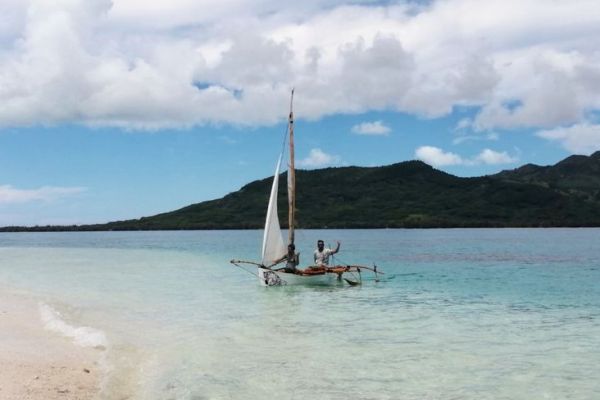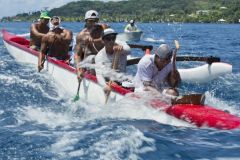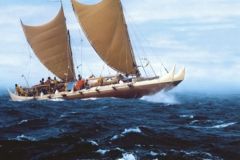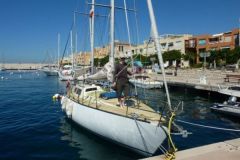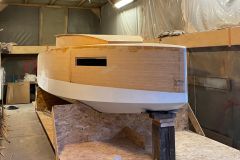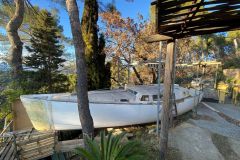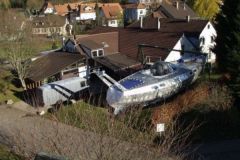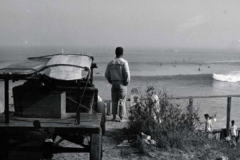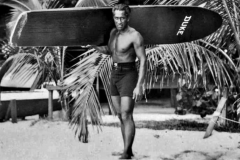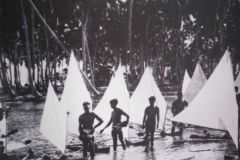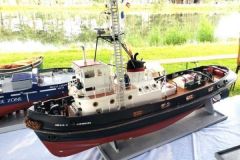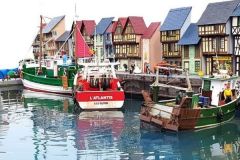A tradition of pirogues in the process of extinction
Having left to live on his sailboat in Polynesia, Thomas ended up settling for a while in Tubuai, the southernmost island of the territory, far from Tahiti. To his great surprise, he did not find a single sailboat on the water. "I realized that everything was done by motorboat. There were no sails, except for a few passing boats and a friend who had imported a Hobie cat. It didn't make sense to me and I got it into my head to make a dugout again."
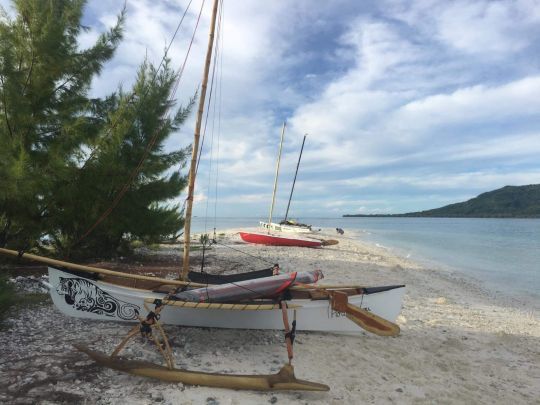
Collecting the memory of sailing canoes
Thomas then set out to find information. He discovers that the last sailing pirogues sailed in Tubuai in the 1980s. Thanks to an American photographer, Don Travers, he finds pictures that allow him to know more about these traditional boats. "There were regattas that were really important social events. There was no writing, so I went to the elders, who were scribbling sketches for me on a corner of the beach.I then tried to be as close as possible to all his information. I made a first version, which kept evolving."

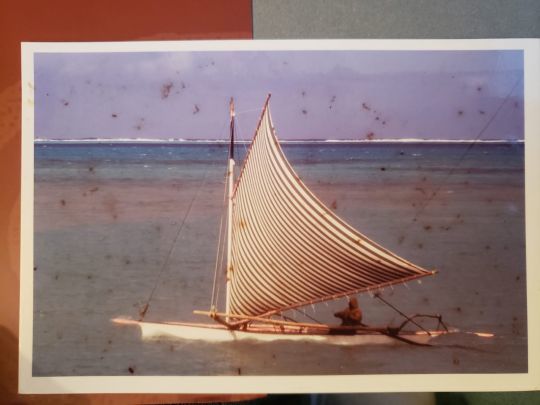
Adapting materials and know-how
Working on the project full time for two and a half months, Thomas built the main hull or Va'a. For reasons of simplicity, he chose to build it in plywood, combined with epoxy resin and fiberglass. He justifies: "The hollowed out wood would have been too long, even though my plywood was of poor quality. If I had it to do over again, I would have made boards with local pine. I did some interesting experiments with coconut fiber instead of glass." In the absence of a trunk or a branch of pulao of good size, the trees not reaching today the good gauges, the float or ama is also in plywood.
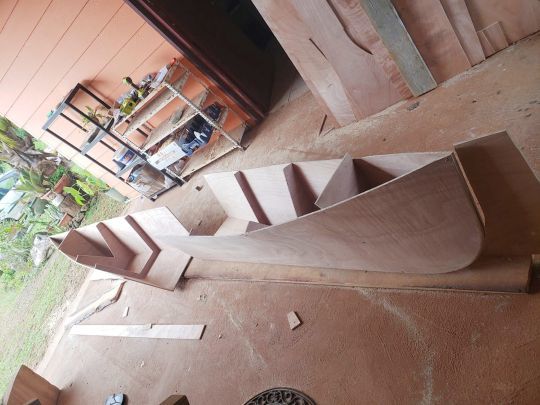
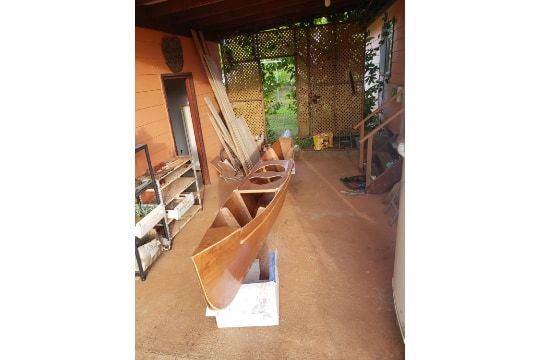
For the rest, he uses local wood, each of which has characteristics adapted to the different rooms. The aito or ironwood, constitutes the beams connecting the Va'a to the Ama. This very strong wood, which cracks before breaking, allows to anticipate possible damages. The mast is made of bamboo, soaked for a few days in sea water to make it rot-proof. Instead of coir fibers, textile rope is used for the guying and the link between beams and floats.
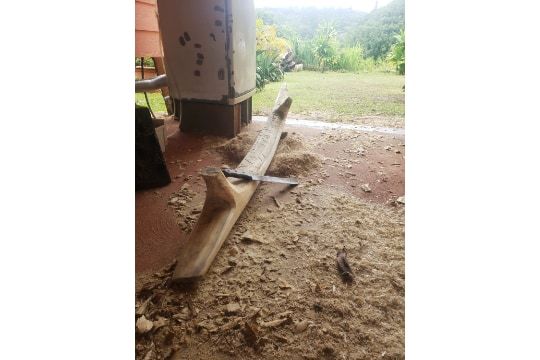

The pirogue, 4.60 meters long for 55 cm width of the Va'a and 3 meters in total, takes shape.
Adaptations for sensations and safety
To complete the armament, Thomas makes with the means of the edge. He recovers an old children's trampoline to facilitate the movement between the float and the main hull.
Watertight boxes were added to the hull following a capsize that left the canoe and crew unable to right themselves and return.
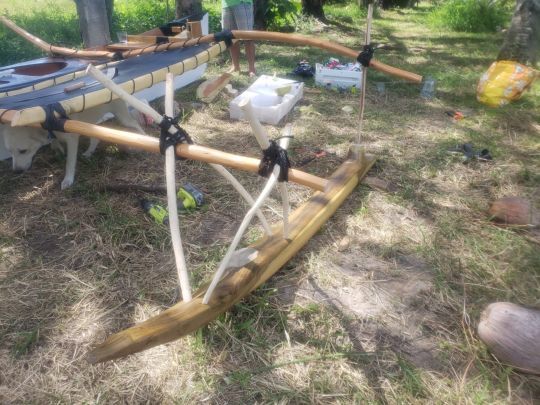
For sailing, it is windsurfing material that is chosen, in the absence of more suitable fabric. Cotton sails have long since disappeared and a cyclone in 2010 caused a lot of damage. Thomas has the luxury of a headsail and a small bowsprit for a spinnaker, although the Tubuai pirogues were generally content with a mainsail.
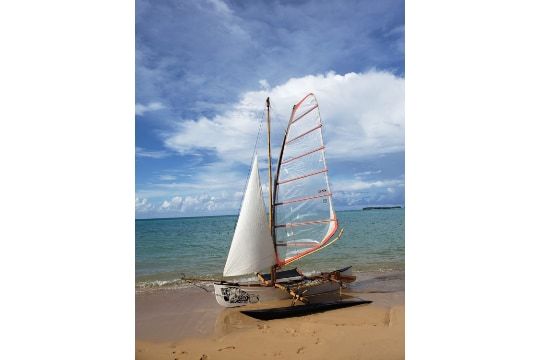
Rediscovery of sailing
Once on the water, Thomas embarked young locals, with some success. He also discovered with pleasure the subtleties and performances of the boat: "A few young people who were intrigued at first got on board and enjoyed it. Some friends have taken over the canoe and are continuing the project, I hope. The boat is amazing. I've never sailed so well upwind. There is no need for a daggerboard. The bows of the hull and the Ama are enough to prevent the pirogue from drifting and we save draft, to pass over the coral spuds without fear. The rudder is almost only used to fine-tune the maneuvers while being able to control yourself by moving on the boat. That way, we can fish and have fun."
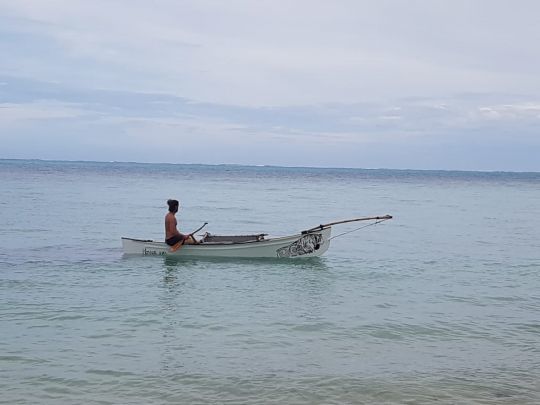
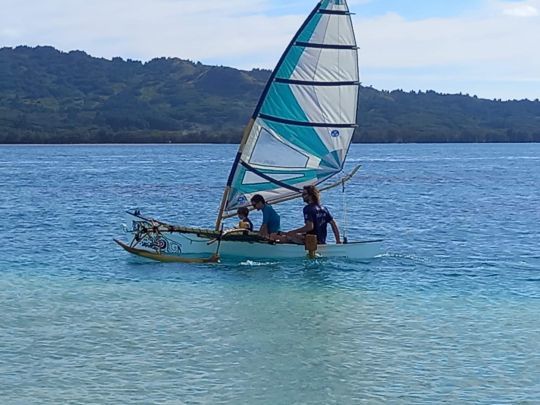
Long live the rebirth of the Tubuai canoe!
